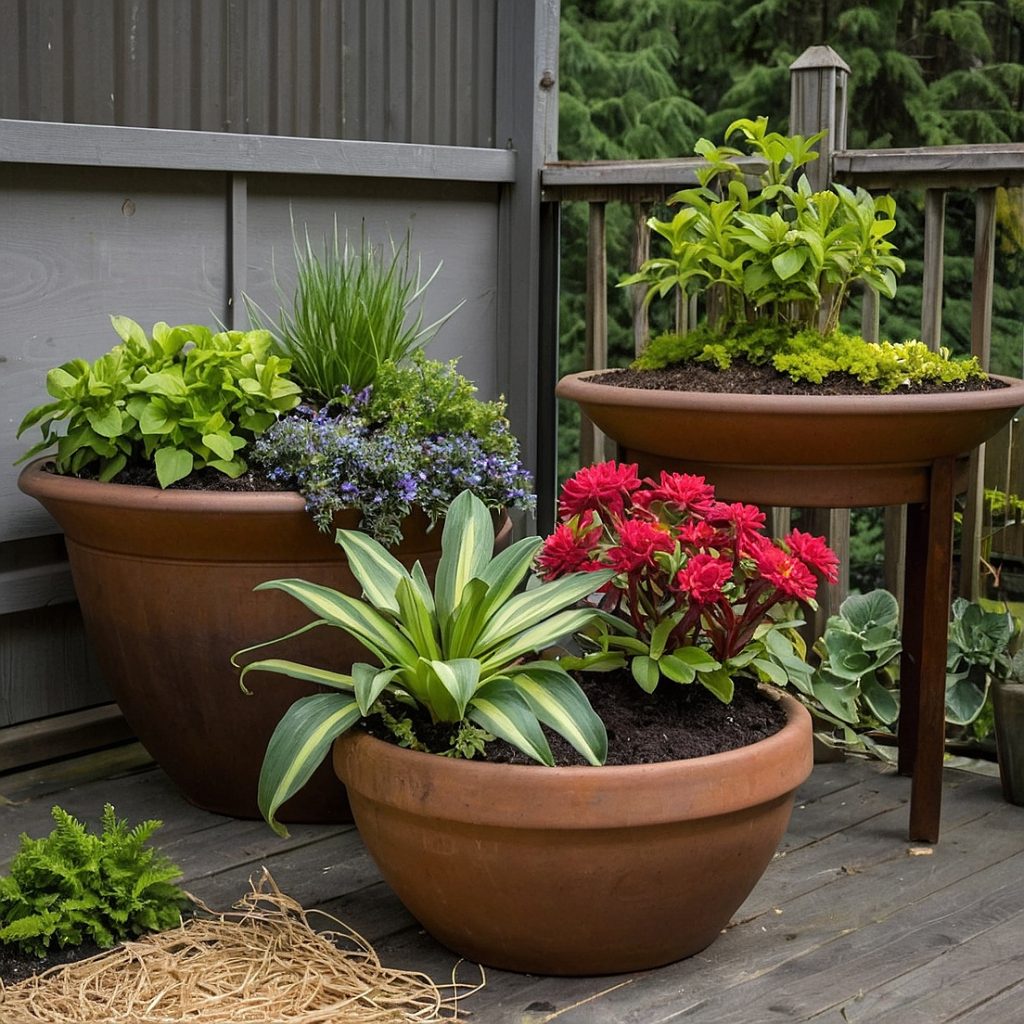Container gardening is a flexible and efficient way to cultivate plants, allowing gardeners to enjoy greenery outdoors during the warm months and easily transition plants indoors when inclement weather strikes. Whether you live in a climate with harsh winters or simply want more control over your plants’ growing conditions, container gardening offers the perfect solution.
Benefits of Container Gardening
- Mobility & Flexibility – Unlike traditional gardens, potted plants can be moved easily, ensuring they get the best sunlight exposure and protection from extreme weather.
- Extended Growing Season – By bringing plants indoors, you can extend their growing season and even enjoy fresh herbs and vegetables year-round.
- Space-Saving – Ideal for urban dwellers, container gardening works well on balconies, patios, or small backyards.
- Pest Control – Raising plants in containers can help reduce exposure to garden pests and soil-borne diseases.
- Aesthetic Appeal – Containers allow for creative arrangements, enhancing the beauty of outdoor and indoor spaces alike.
Best Plants for Container Gardening
Herbs & Vegetables
- Herbs: Basil, rosemary, thyme, mint, and chives thrive in pots and adapt well to indoor conditions.
- Vegetables: Cherry tomatoes, peppers, lettuce, and microgreens are excellent choices for container gardening.
- Leafy Greens: Spinach, kale, and Swiss chard can flourish in containers and be moved indoors as needed.
Flowers & Ornamental Plants
- Annuals: Geraniums, begonias, and petunias bloom beautifully outside but can be brought indoors before frost.
- Perennials: Hostas and ferns can be grown in containers and overwintered indoors.
- Succulents: Easy to maintain, succulents like jade plants and echeveria thrive in pots and make great indoor décor.
Dwarf Fruit Trees & Bushes
- Citrus trees like lemons, limes, and figs can grow in large pots and transition well between outdoor and indoor settings.
- Strawberries and blueberries can be grown in hanging baskets or containers for easy mobility.
Tips for Successful Container Gardening
- Choose the Right Containers
- Opt for lightweight materials like plastic or resin if you plan to move plants often.
- Ensure containers have good drainage holes to prevent root rot.
- Use High-Quality Potting Mix
- Avoid using garden soil, which may compact in pots and hinder root growth.
- A well-draining potting mix with organic matter will provide nutrients and aeration.
- Monitor Watering Needs
- Containers dry out faster than ground soil, so check moisture levels frequently.
- Use self-watering pots or place saucers underneath for extra hydration.
- Adjust Lighting & Temperature
- When transitioning indoors, place plants near south-facing windows or use grow lights.
- Acclimate plants gradually by moving them indoors for a few hours a day before fully relocating them.
- Prune & Repot Regularly
- Trim plants to maintain their shape and encourage new growth.
- Repot when roots outgrow their container to ensure continued health.
Final Thoughts
Container gardening is a practical and rewarding method for growing plants throughout the year. Whether you’re cultivating fresh herbs, vibrant flowers, or even fruit-bearing trees, the ability to shift plants between outdoor and indoor spaces provides unmatched versatility. With the right techniques, your container garden can flourish in any season, bringing beauty and greenery into your home and garden space.
Have a garden idea you need help implementing? Call Levy’s Lawns and Landscaping at (360) 876-6567
